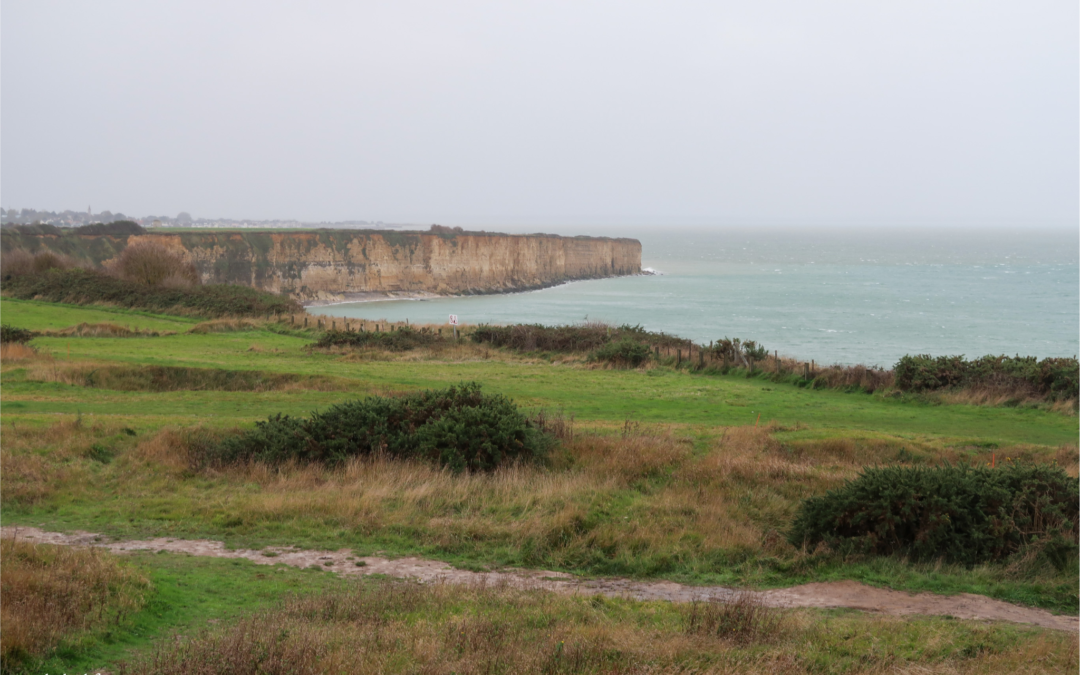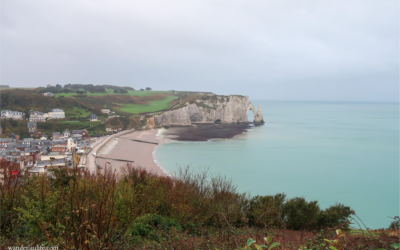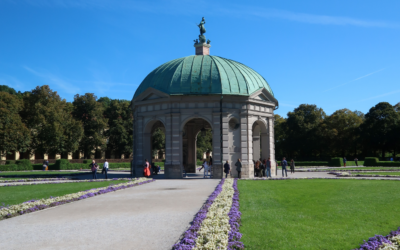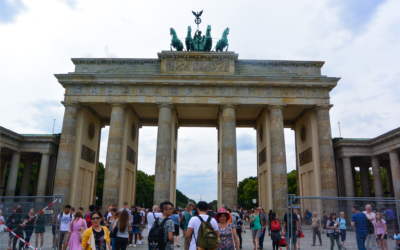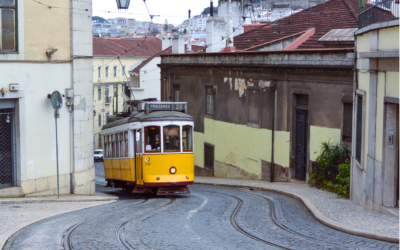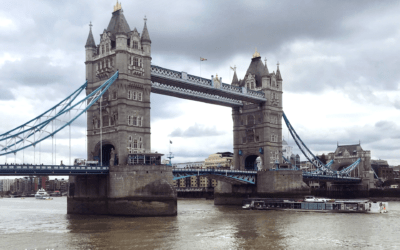“And what a plan! This vast operation is undoubtedly the most complicated and difficult that has ever occurred.”
Winston Churchill
Visiting D-Day sites was high on our wish list. Thus, we visited A LOT of D-Day sites as part of our Coastal Normandy Road Trip. My husband is a World War II history enthusiast. Hence, this was one of the biggest reasons we took this epic road trip.
This itinerary includes a mixture of some of the beaches and other important World War II sites we were lucky to visit. There’s a lot of information here, so grab a snack, a cup of tea, or coffee to enjoy while you read!
In short, we didn’t have time to visit every single site. There is a section of this blog where I list some more places of interest, just in case we return.
If you’re interested in reading more about our Normandy Road Trip, you can find that post here:
Visit Normandy France: The Best 3-Day Road Trip
Visiting D-Day Sites Facts:
- D-Day occurred June 6, 1944, when The Allies invaded the beaches at Normandy.
- The 5 Beaches the Allies invaded on D-Day are code-named
- Utah, Omaha, Gold, Juno, and Sword
- In any case, look up the hours for all these sites. It will influence how long you spend at each location, and it may change the order of how you visit them. I included times from my trip, but it’s subject to change. Furthermore, some sites are seasonal.
- The D-Day invasion was the largest air, land, and sea assault in history.
- The D in D-Day stands for Day. This code name for this secret operation markedly meant it was a crucial military operation day.
- All things considered, historians note D-Day as the beginning of the end of World War II.

Itinerary to Visiting D-Day Sites
This is by and large the order in which we visited the D-Day sites in Normandy. You are welcome to follow our itinerary! One big tip is to pay attention to the weather when packing. We happened to be visiting on very windy and rainy days, which resulted in very muddy walks. On the whole, we were lucky to have our hiking shoes and rain boots handy.
Arromanches-les-Bains (Arromanches)
Arromanches is a historic landing place. You can see the artificial ports installed during World War II. In summary, the ports allowed for the daily high number of disembarkation of materials.
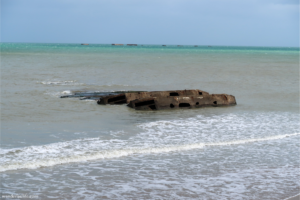
Arromanches Itinerary
- Praia Gold Beach
- It is equally important to spend some time on the beach! You will see materials left behind and monuments scattered along the beachfront and the walkways. When you look out at the sea by the Musée du Débarquement, you can see some of the artificial ports built by the British in 1944.
- Musée du Débarquement
- An overall commemorative museum of D-Day landings. There are a plethora of WW2 relics, including uniforms, badges, photos, and ammunition.
- When you walk into the museum, there is a short historical film. They have 2 different showings, alternating between French and English. They make frequent announcements before the start of each film.
- There is a parking lot for the museum and Praia Gold Beach in front of the museum. It’s correspondingly a pay parking lot. We were also able to find nearby neighborhood parking for free.
- We at length spent about 2 hours here.
- Musée du Débarquement website
Visiting D-Day Sites: Take a Drive Back in Time
The following destination is the Longues-sur-Mer Battery. As you make the 10-minute drive, pay attention as you drive through Tracy-sur-Mer and Manvieux. These are historic towns that evidently withstood the difficulties of war. As you drive by, you will notice bullet holes left behind on the gates along the road.
Now, imagine those scenes in Saving Private Ryan, where the soldiers are hiking along the roads in transit to the next town. You’ll know what I mean when you see it for yourself. You’ll really feel like you’ve traveled back in time.
Longues-sur-Mer
In due time, you will make your way to Longues-sur-Mer, a commune in Normandy known for Calvados and the battery.
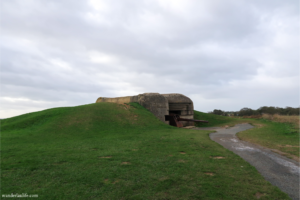
Longues-sur-Mer Itinerary
- Longues-sur-Mer Battery
- Longues-sur-Mer Battery is a World War II German artillery battery on the cliffs. The location was part of their Atlantic Wall defense. This battery has surprisingly retained all of its original guns.
- Park in the designated parking lot for the site on the dirt/grass. However, it does seem to fill up quickly.
- You are allowed to walk around and explore the many different casemates. Be sure to follow the path to see the casemates located right along the cliffs in order to take a moment to look at the best view.
- As always, be respectful. Do NOT ruin the casemates.
- Longues-sur-Mer is free to visit!
- According to Google, the battery is always open. I recommend visiting when you have good daylight to enjoy this D-Day site.
- Normandy Tourism website
Omaha Beach
Omaha Beach is one of the most famous Landing sites. This D-Day site is often referred to as the bloodiest of the D-Day beaches. This is largly due to the steep cliffs and heavy defenses that surrounded Omaha Beach. It is a beautiful site today and a well-laid memorial to the soldiers who sacrificed their lives here.
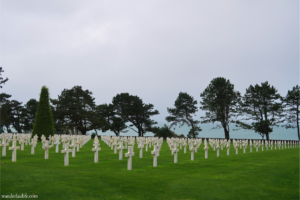
Omaha Beach Itinerary
- Normandy American Cemetery
- The site is a museum, memorial, and burial ground.
- There is a large parking lot available.
- There are plenty of signs pointing you towards the museum and cemetery. If you go towards the building, you will notice a security line. Once you finish security, take the stairs or the elevator to the lower level, which is the museum.
- The museum is free and very informative. Give yourself plenty of time. There is a robust amount of information about the logistics of the landings and an emotional collection of stories.
- Finish the museum, then take the steps or elevator back to the main floor towards the burial ground. It’s a beautiful tribute to the American troops with monumental views overlooking Omaha Beach.
- There is no beach access here. There are nearby beach access points with parking lots.
- The museum was open from 9am to 5pm. As always, double-check the times for your trip.
- Normandy American Cemetery
- Pointe du Hoc Monument
- Pointe du Hoc is a 100-foot cliff overlooking the English Channel. On D-Day, the US Army Ranger Assault Group scaled the cliffs to take control of this German-occupied area.
- I had never heard of Point du Hoc before our trip. We read about the Army Assault Group climbing the cliff at the Normandy American Cemetery Museum. We were so intrigued we looked up the location to find that it’s a quick 15-minute drive from the Cemetery.
- Although it’s a monument, there is much more to see. There are many remnants of the war here.
- Pointe du Hoc is a free site with parking. Due to the rainy weather, it was a very muddy walk around.
- Be sure to look at those 100-foot cliffs…. WOW! I can’t believe the Assault Group scaled these cliffs.
- Pointe du Hoc
Utah Beach
Utah Beach is the furthest west beach for D-Day sites. The recollections of what happened at Utah Beach are beyond astounding. Due to heavy winds, things went far from planned. At this site, thousands of paratroopers drifted far from their designated drop zones and into the war zone. Many were shot in the sky or drowned in the marshlands by their heavy gear. Despite all these mishaps, they captured the beach’s crucial exit points.
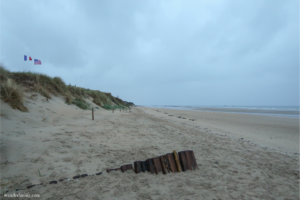
Utah Beach Itinerary
- Musée du Débarquement de Utah Beach
- This museum was Hub’s favorite in terms of layout and availability of information. He’s fascinated by military history. He particularly enjoyed the aviation section of the museum. I liked the variety of accounts/interviews, timelines, and relics.
- Hubs wanted to read EVERYTHING, and 1.5 hours was not enough for all of it.
- There is a fee to visit the museum, but parking is free.
- The museum hours were as follows
- From February to March, they are open from 10am to 5pm
- May through September 9:30am to 7pm
- From October through April, except February through March, they are open 10am-6pm
- The last entry is 1 hour before closing
- Check their website for specific closing dates.
- Utah Beach Memorial
- The memorial is behind the museum along the beach. You can also see the view from inside the museum.
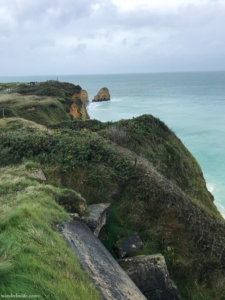
More Options for Visiting D-Day Sites
- Gold Beach
- Gold Beach is geographically located in the middle of the D-Day beaches. Here, British troops successfully stormed the beach and secured several exits. Due to their success, they were able to capture Arromanches.
- Musee America Gold Beach
- This small museum covers the history of D-Day at Gold Beach and America’s history with early military aviation. They are a seasonal museum and open from April through September. Hours vary, but you can find updates on their website.
- Gold Beach Museum website
- Juno Beach
- Canadian soldiers faced many hardships at Juno Beach. They eventually succeeded in advancing inland to capture many towns to give crucial links with the British on Gold Beach.
- Juno Beach Center
- This visitor center and museum details Canadian history in World War II.
- Juno Beach Center website
- Sword Beach
- British and Canadian troops dropped behind enemy lines to secure the Allies’ eastern end. Consequently, they were successful in securing several bridges to prevent German reinforcements from arriving.
- Le Grand Bunker – Museum of the Atlantic Wall
- The museum boasts 5 floors of reconstructed history.
- The Bunker Museum website
- Saint-Lô
- Saint-Lô is a commune in northwest France. All in all, I would love to see the war scars on their historic town buildings.
- Eglise Notre Dame de St. Lô
- This church is supposed to have incredible views of the town. You can still see the bullet holes on the outer walls.
- Promenade des Remparts de Saint-Lô
- Walk around the old tower and see what is left of the historic town.
- There is a monument for those who died during the June 6, 1944 bombardment.
- Chemin de Halage
- I love a busy river path, and this one looks beautiful.
Visiting D-Day Sites
I’m so grateful we visited these D-Day sites for ourselves. I’ve heard so many stories about how significant this area is, and there are no words to describe how beautiful and emotional this all is. Although overwhelming, it was undeniably worth the time. Visiting D-Day sites on our journey around Normandy made an incredible road trip.
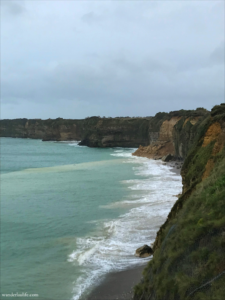
Like What You’re Reading?
Here are some other posts that may interest you:
5 Breathtaking Sights You Don’t Want to Miss in Étretat, France
A France road trip along Normandy should be on everybody’s bucket list. On your road trip, you need to include a stop in Étretat. These are some of the most breathtaking sights you don’t want to miss on this trip.
A Handy Guide to Oktoberfest
Are you planning on going to Oktoberfest? Here is a handy guide to enjoying Oktoberfest. If you are visiting Oktoberfest, it would be a shame not to take the opportunity to experience Munich as well. Included is how to spend the day after Oktoberfest in Munich.
6 Neighborhoods You Have to Visit in Berlin
These are the 6 neighborhoods you have to visit in Berlin. With so much to see and do in this fun city, these are the neighborhoods you don’t want to miss on your trip.
The Essential Travel Guide to Lisbon, Portugal
The essential travel guide to Lisbon. My easy-to-follow guide includes the best sites and helpful tips for visiting this historic city.
London Eats and Treats
There are so many things to do in London, including eating all the food. Here’s a growing list of some London Eats and Treats!
London
How funny is it that my first visit to London was driven by attending an NFL game? We took a weekend trip to London, which is a quick train ride from Brussels. London is a big city and requires much more time to soak it all in.
